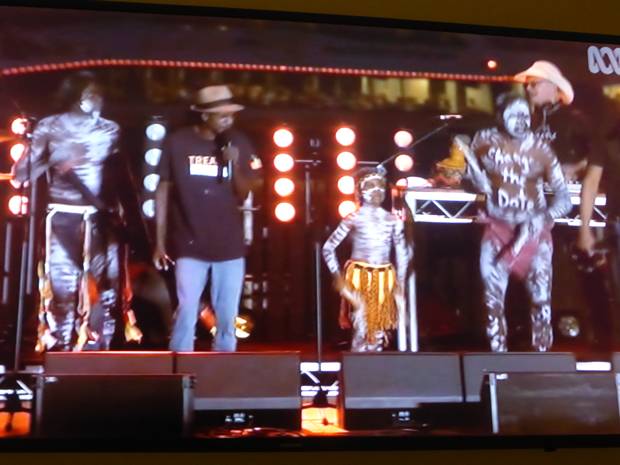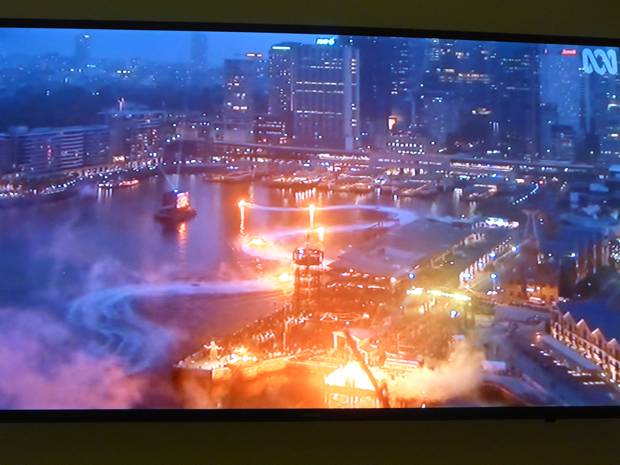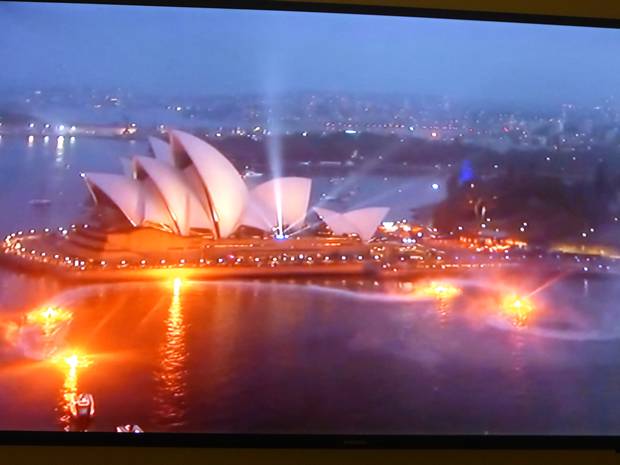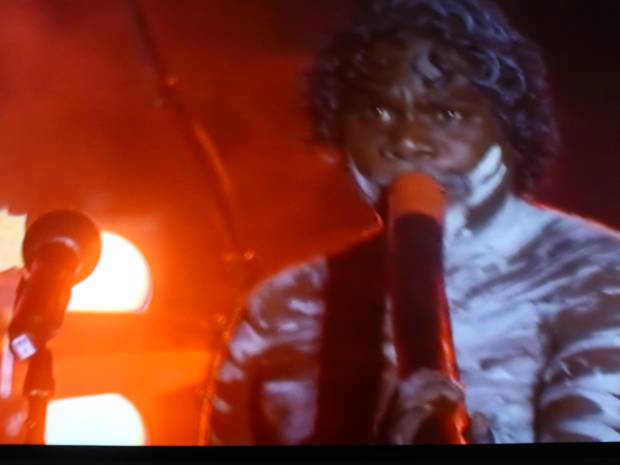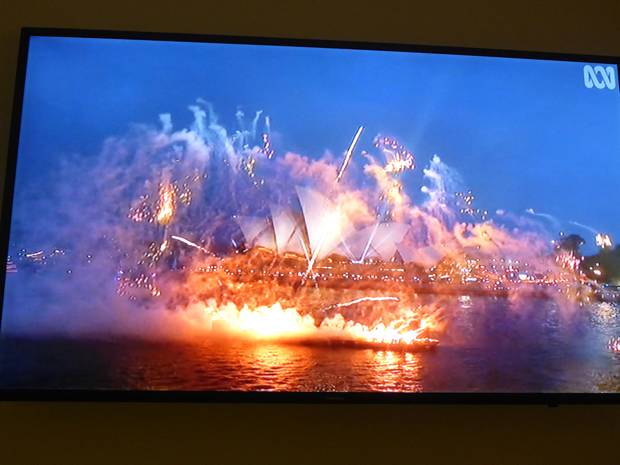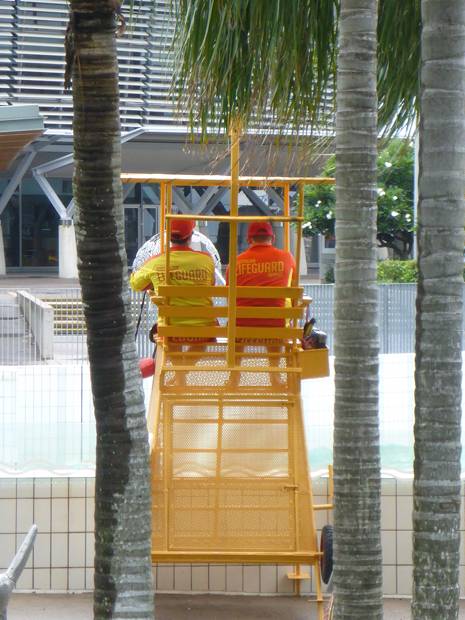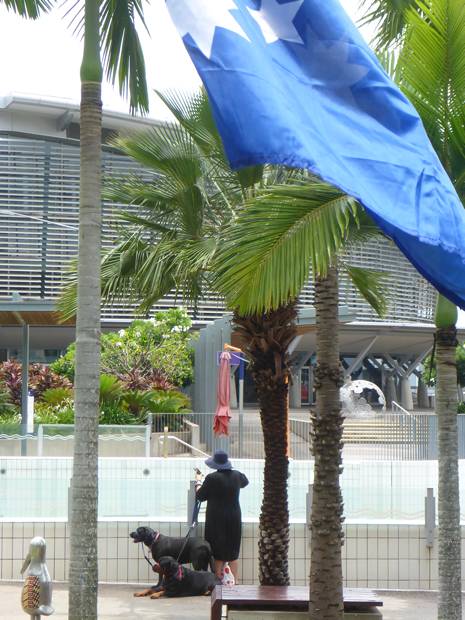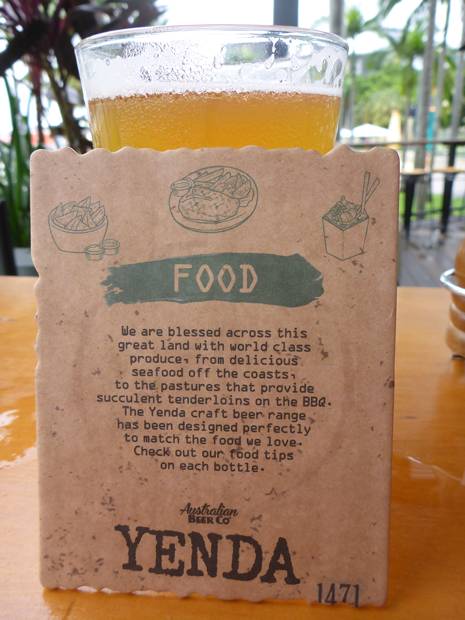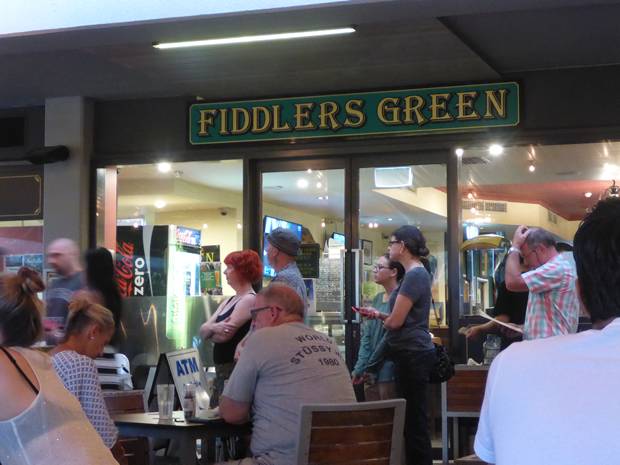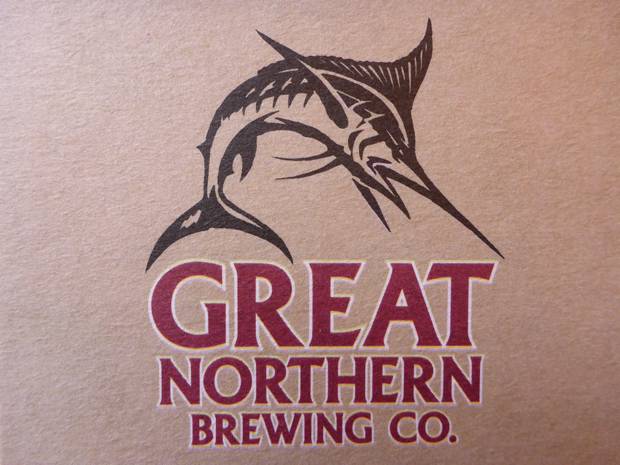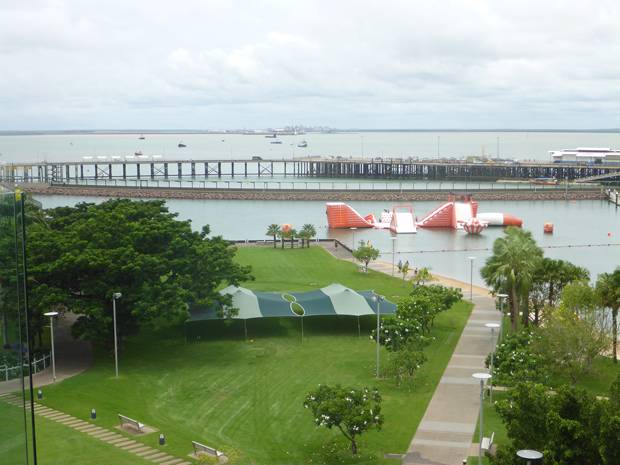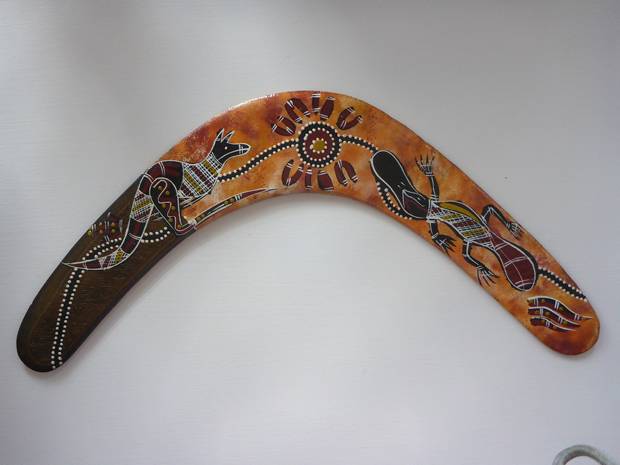Abolish Australia Day and Where are these obscene souvenirs coming from?

|
Ban Australia Day? and Where are these obscene souvenirs coming from? The TV reporter back in London was delighted to show us the banner hanging over the side of London Bridge which read ‘Abolish Australia Day’ and was allowed to hang there for a few hours, blowing gently in the breeze until the authorities told the protesters to remove it. It had served its purpose, carrying the message to millions of screens all over the world. Back in Canberra a polished crowd had gathered on the grass infront of the Tourist Centre at Regatta Point underneath a perfect blue sky, next to where we had sped by on our bikes just nine days before. Various dignitaries gave speeches which spoke of the glossy iceberg tip of political aims and ideas and two mixed Bininj and Balanda people gave their version of their Australian experience and hopes for the future and Rob and I were left wondering what ordinary Aussies of both backgrounds thought. My notebook reads ‘lots of shiny white folk with hollow words and insincere promises and ‘white aborigines’ – the acceptable face of aborigines?’ (More like the aborigines who have integrated and are trying to make changes from within white society) Across the lake, still in Canberra at the Aborigine Parliament, a cluster of tents, caravans and containers infront of The Old Parliament House, hundreds of native and new Australians took part in a protest rally to push for the abolition of the annual celebrations of the day in 1788 when the first fleet of British ships arrived at Port Jackson, NSW. Once that part of the day was done Rob and I were free go and find lunch, a pint of ’50 Lashes’ and a shared pizza and take a walkabout in town to stretch our legs and find a boomerang to add to the gift collection for family back home. There are a few street dwellers around, living rough just like in most cities throughout the world. I was reminded of what the young girl had said in the lift in Adelaide, “Watch out for the abos”. Some liked to have a chat and I sensed they had not been homeless for long, their clothes and bedding were clean. Michael had told us that they come into Darwin in the wet season because their homes are flooded, but that would not have happened back in the days of clan living so at some stage no doubt for numerous reasons they had become displaced. If Bininj people return to their clans with drink or drug problems they often face rejection or even worse so they become trapped between two societies unable to live well in either. Our exploration of the souvenir shops was revealing. We explored the flight quality of various boomerangs and it appears they were traditionally made from the roots of Mulga or Black Wattle. A part of the root that was already in the shape of a boomerang was chosen because where the grain followed the shape, the tips of the boomerang would be less inclined to break on landing. The one we bought is made of plywood and came painted with authentic designs dating back to the past. While wandering around the shelf units my eyes fell on a box full with kangaroo scrotums and next to it another full with their black clawed paws, that was after passing a pile of their skins by the door. As I have mentioned there used to be a good trade in animal skins ferried down the South Alligator River to ships waiting offshore. But I wondered about the thinking behind making kangaroo parts in to souvenirs and the thinking in the buyers’ minds too. Maybe they were the product of culling. In parts of Australia kangaroo are culled at a rate of 1 million per year to prevent them from competing with farmers and damaging endangered grasslands and wildlife. There has been a quota on the numbers that can be culled but this is not regulated. In the last 20 years the population of kangaroos has been reduced by 90 million through culling. Understandably this has divided opinion in Australia and one academic view is that a report promoting culling ‘lacks analytical and ethical credibility and as a document that seeks to destroy the lives of sentient beings and their dependent young should be discounted as wholly inadequate and lacking moral foundation’. And many Australians agree. For as long as they are now treated as pests the future of this quintessential Australian marsupial is by no means secure. Also during our ‘shopping’ expedition we admired the beautiful artwork of local aborigine ladies who produce colourful high end woven fabrics and paintings for the tourist trade. These are retailed through high street outlets and on the internet and a portion of the profit goes back to the artists. As we were flying I didn’t buy anything, instead collected business cards so that one day, when we are sitting in our as yet fictitious home back in the UK we can choose some lovely designs to decorate walls, windows and settees. That’s the idea anyway. My point is that if it is women who are producing this modern aboriginal art and craft then is that a new thing or are they continuing an ancient tradition but with a modern commercial slant? My gut feeling is that it is the latter. We did buy a boomerang but I have a feeling that after bringing it all the way back to the UK it might just end up on the wall just outside the booze cabinet on Zoonie! After all that ‘shopping’ we wandered back to base camp knowing this would be our last time on the friendly streets of Darwin. We dined on a Greek salad for me and a steak mignon for Rob sitting people-watching outside the Fiddlers Green before returning to the room to watch the evening celebrations of Australia Day in Sydney. The combination of darkness and the lights of the show made for a colourful spectacle. Sailing yachts dressed overall with blue lights did a synchronised dance around Circular Quay and men on water jets that lifted them high into the air performed a water ballet but most impressive for me was the stage performance of Yothu Yindi’s ‘The Treaty Project’ band from Arnhem land. Co-founder of the band, Witiyana Marika said he does not support changing the day of the celebrations. He feels privileged to be part of the January 26 program and the group wanted to celebrate unity and redemption. Their music had a lovely beat and lots of meaning in the song lines. The use of the didgeridoo added a richness akin to kettle drums and the crowd seemed appreciative too. Looking at a couple of polls on the topic one showed that three out of four people believe the date should remain the same and only 10% of 1000 people wanted it changed. What proportion were first nation voters I am not sure. The more aborigines can become part of the modern Australian way of life the less they will want to change the date and instead see i as a way forward to a united future. It is a complex issue for sure. We were coming to the end of our second honeymoon in Darwin and right from the start had promised ourselves a swim around the lagoon that was once an inner harbour. It is the big area with the recreation inflatables. Well the water was like a pleasant bath as we gently swam the distance, hoping there wasn’t a hole in the crocodile net across the entrance, checking in the water for jelly fish and keeping out of the way of the dedicated regulars as they ploughed confidently around taking no prisoners. It took around 40 minutes and after we’d wandered back to our room through the sweet scent of frangipani blossom I rewarded myself with a relaxing bath, speaking of which that is where I am going right now in chilly, wet, windswept England.
|
